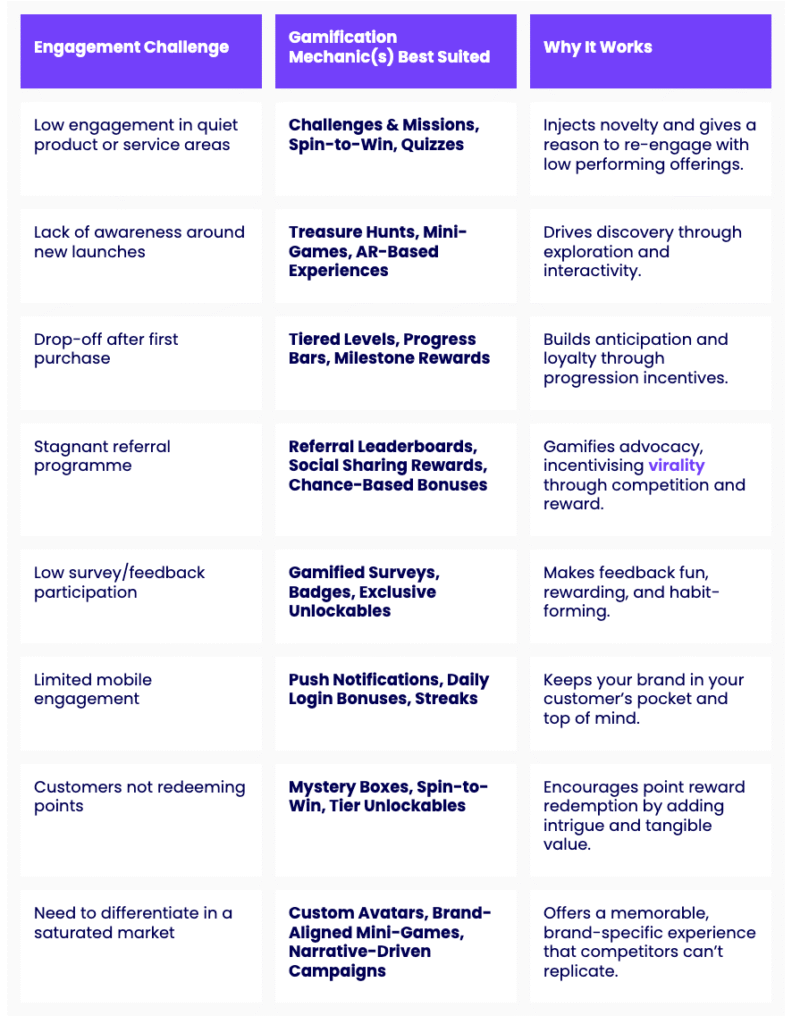Gamification has long been a strategy to boost customer engagement in loyalty programs. In fact, a loyalty program itself incorporates game theory strategies to improve lifetime value. Gamification has been shown to increase customer engagement up to 47% and brand loyalty by 22%.1
Now, AI is taking it to the next level. By creating personalized gamified experiences, AI allows brands to tailor challenges, leaderboards, and milestones to each customer’s preferences and behaviors. This transforms loyalty programs into dynamic, interactive experiences that keep customers engaged and motivated over time.
AI makes gamification more effective by analyzing customer data to understand individual preferences, shopping habits, and engagement patterns. For instance, using machine learning, a loyalty program could present personalized challenges, such as spending a specific amount within a week to unlock bonus points, or milestones based on a customer’s favorite products. Leaderboards can be segmented so customers compete against peers with similar activity levels, fostering friendly competition while ensuring inclusivity. These personalized experiences keep the program fresh, relevant, and exciting for customers.
Companies like Starbucks and Nike have successfully integrated AI-driven gamification into their loyalty programs. Starbucks uses AI to offer personalized challenges through its Rewards app, such as earning bonus stars for trying new menu items or visiting on consecutive days. These challenges are tailored based on past purchase data, ensuring relevance to individual customers. Similarly, Nike’s NikePlus app employs AI to gamify fitness and shopping experiences, rewarding users for completing workouts or running a certain distance (based on previous run data), participating in challenges, or hitting purchase milestones. AI ensures these challenges are meaningful and achievable, keeping users motivated and loyal. At the end of a challenge, customers may receive a personalized offer for completion in the form of a badge, discount or access to early product drops.
Adding gamification to your loyalty program, you need to start the same place you would for any marketing campaign or test, with goals and an understanding of what you want to learn and achieve. The main outcome of gamification is almost always engagement for each business, that engagement level means different things. The below table helps you choose which one to start with for your business.1

Remember: A tactic that worked for a business may not work the same way you desire when implemented in your marketing strategy. Gamification works the same way.2 AI-powered gamification makes loyalty programs more engaging and deepens the customer’s connection to the brand.3
Deployment of AI-powered gamification often involves integrating machine learning algorithms with existing loyalty platforms. These algorithms continuously analyze customer data to generate dynamic challenges and monitor real-time performance. By using mobile apps, websites, and in-store systems as touchpoints, brands can seamlessly deliver these gamified elements to customers across channels. The result is a loyalty program that not only drives engagement but also strengthens customer relationships by providing fun, personalized, and rewarding experiences.
- How Does Gamification in Loyalty Programmes Drive Engagement?: https://blog.propellocloud.com/gamification-loyalty-programs
- 11 Best Gamified Loyalty Programs & Why They Work: https://loyaltymethods.com/blog/how-ai-is-revolutionizing-customer-loyalty/
- How AI is Revolutionizing Customer Loyalty: https://loyaltymethods.com/blog/how-ai-is-revolutionizing-customer-loyalty/















